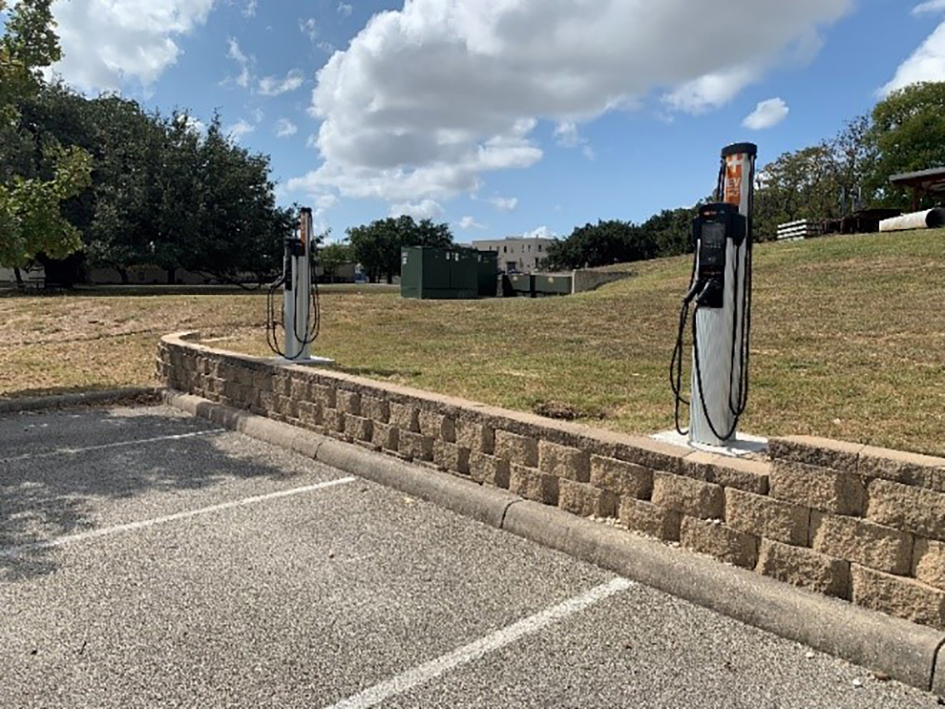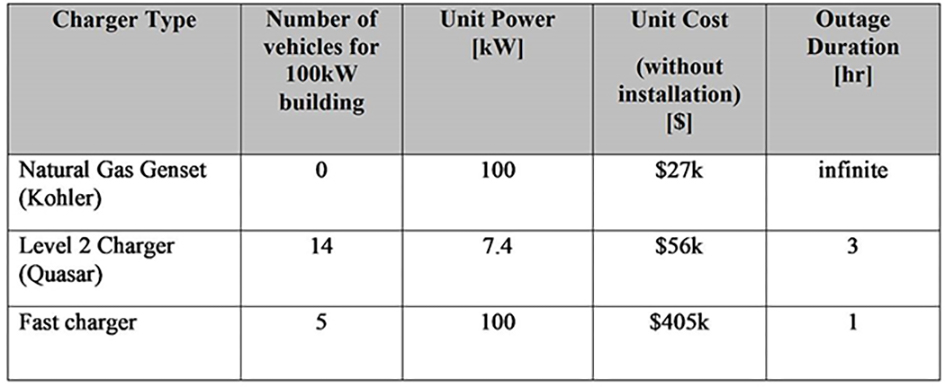Background
SwRI considered installing charging stations for employees owning electrified vehicles to charge their cars while at work. This could be an opportunity for both employees and SwRI as employees would have an infrastructure to recharge their vehicles and SwRI would have access to a fleet of vehicles with significant energy storage that could be used to provide power to critical systems in the event of a power outage.
Approach
Employees owning electric and plug-in hybrid vehicles were consulted to determine an optimal number of charging stations and locations. A third-party vendor of Level 2 electric vehicle supply equipment (EVSE) performed a site survey and provided a quote to supply the chargers.
The investigation included a survey of vehicle-to-grid (V2G) chargers to assess the technology and determine a timeline for commercial availability. Power consumption of SwRI’s critical buildings was analyzed in order to assess the feasibility of V2G chargers to power these buildings in the event of a power outage.

Figure 1: Bidirectional vehicle-to-grid charging.
Accomplishments
Three ChargePoint CT4021-GW1 dual-port chargers have been installed at SwRI, one at the Slick Café and two at Building 263. The charging stations are now available for SwRI employees with a ChargePoint membership to charge their vehicles while at work.
The technology survey confirmed that there currently is no volume production of a bidirectional charger. Several companies, however, are developing various types of chargers: EVSE, on-board bidirectional AC-DC chargers, and off-board bidirectional DC-DC chargers. The lack of maturity and standardization of these products make them high-risk items.
The building energy and power analysis showed that, using advertised specifications of future bidirectional chargers, it would take 14 electric vehicles to power a 100 kW building for three hours, and the investment cost is twice that of a conventional natural gas genset. Therefore, it does not make sense at this point to consider bidirectional charging.

Figure 2: ChargePoint CT4021-GW1.

Table 1: Bidirectional charging comparison chart.

